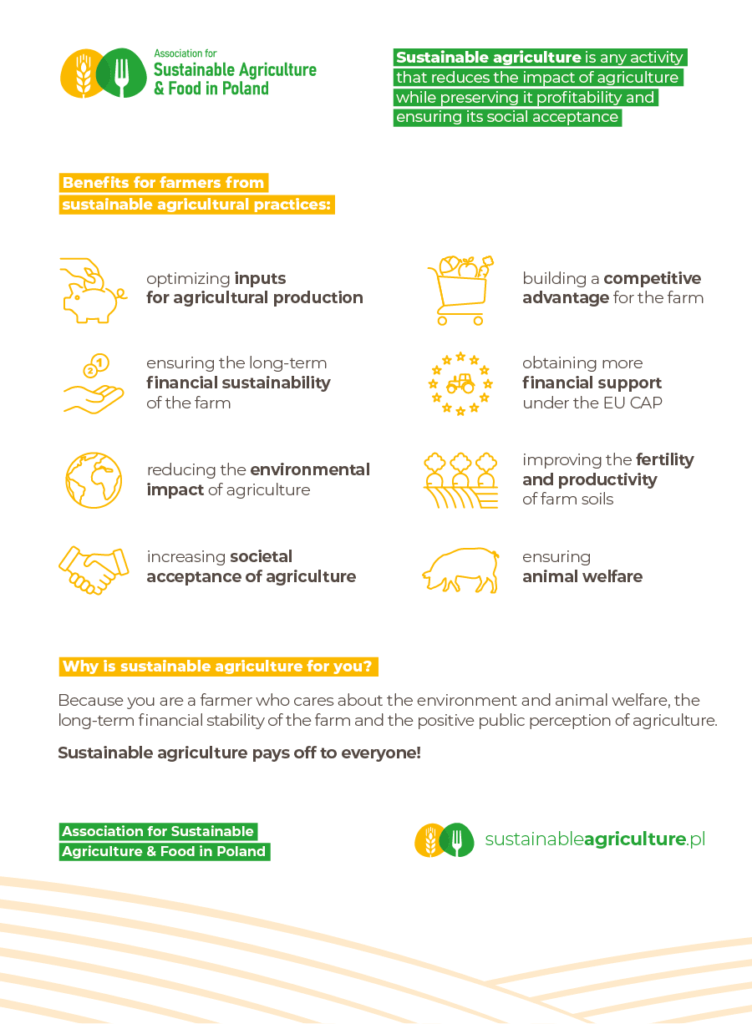The European Union, consumers and companies from the food responsibility chain increasingly demand that farmers pursue the rules of sustainability in agricultural production. Sustainable agriculture is still an option today, but a necessity tomorrow. Therefore, in order to ensure long-term competitiveness of the farm, it is worth implementing this model of farming now.

